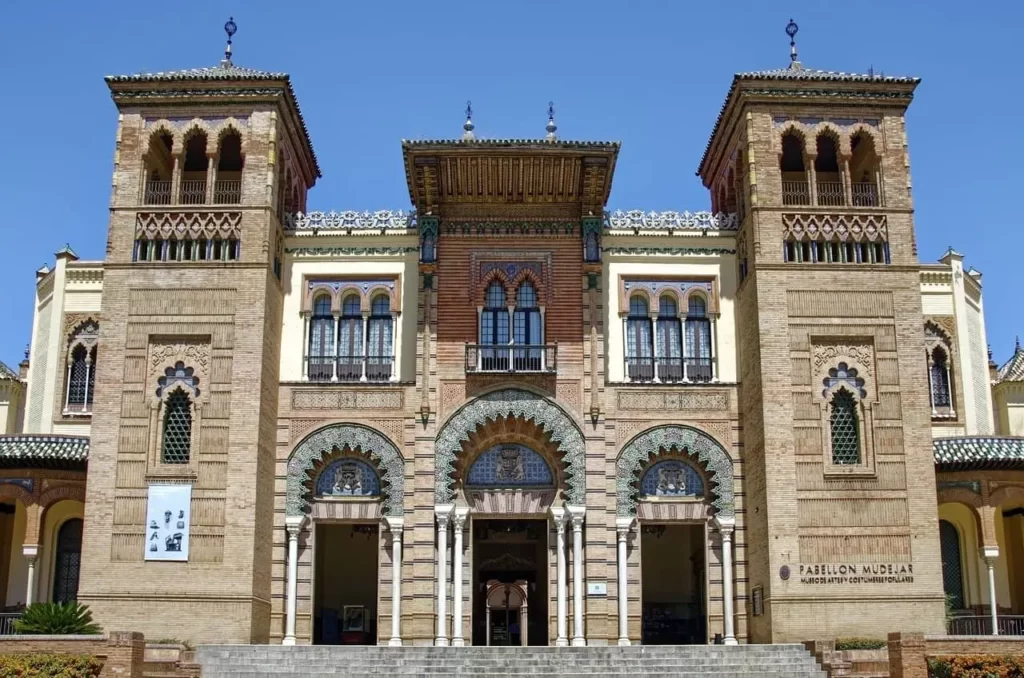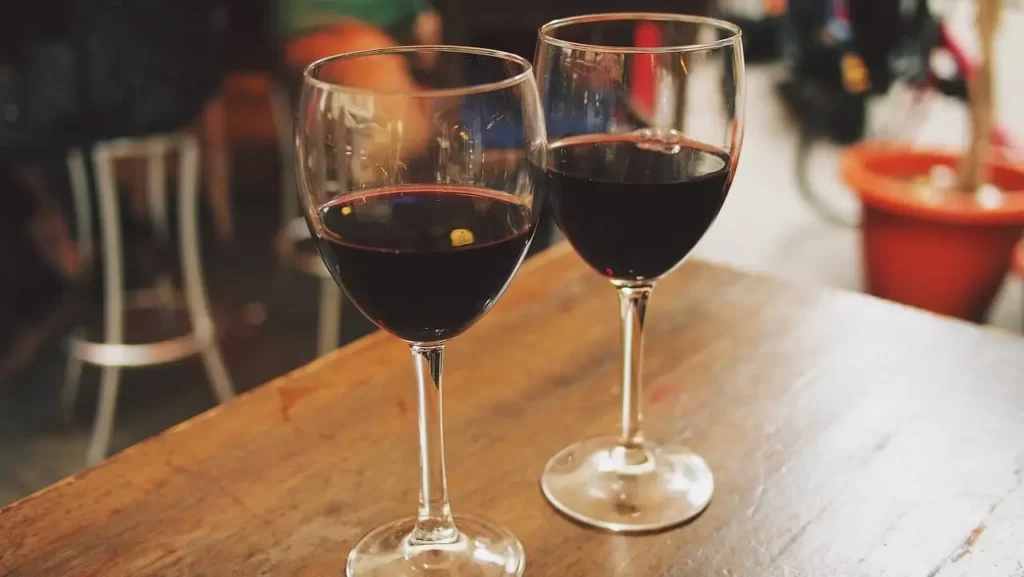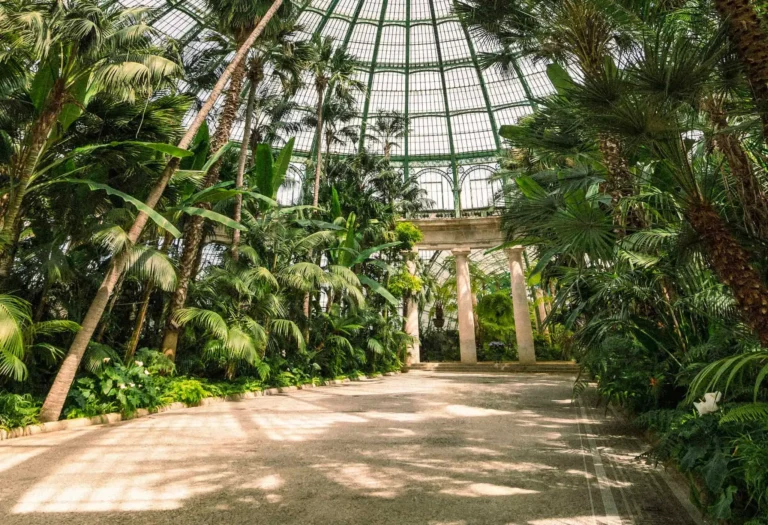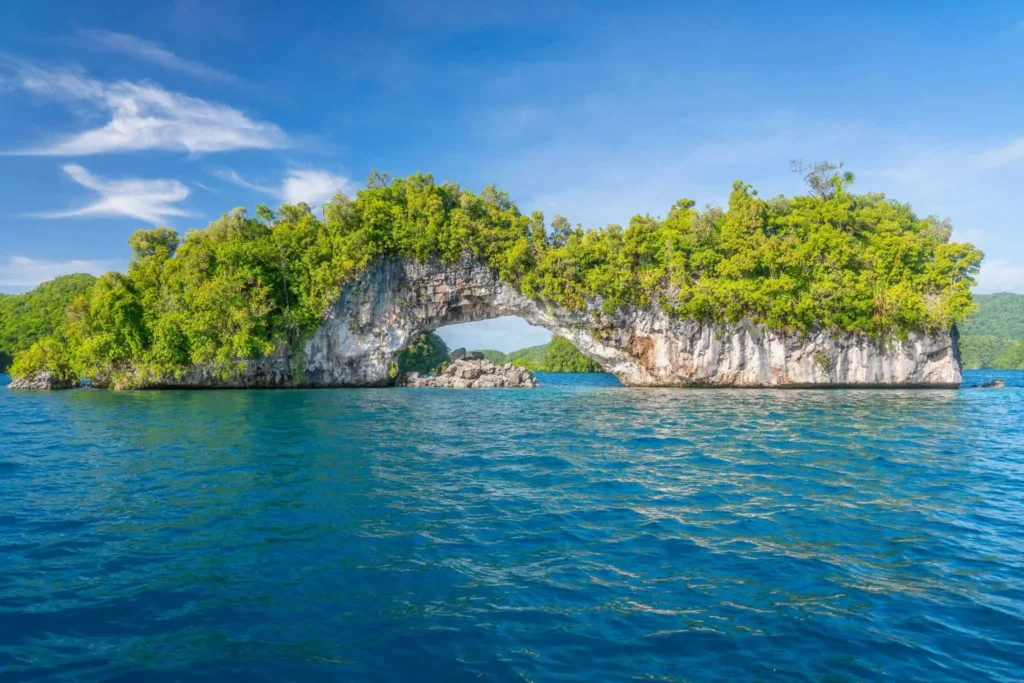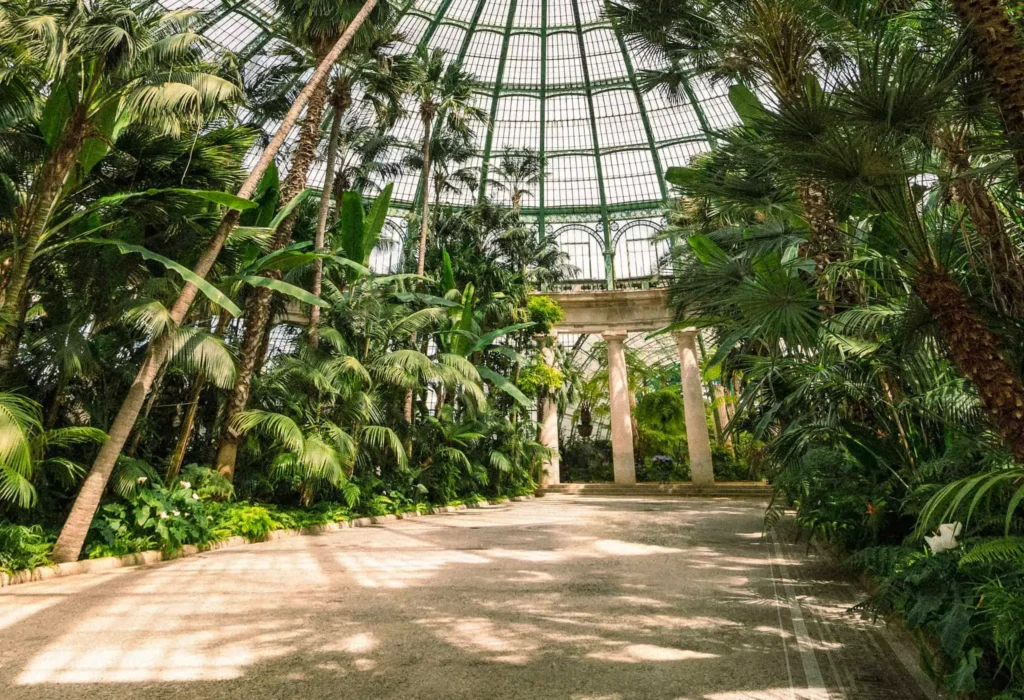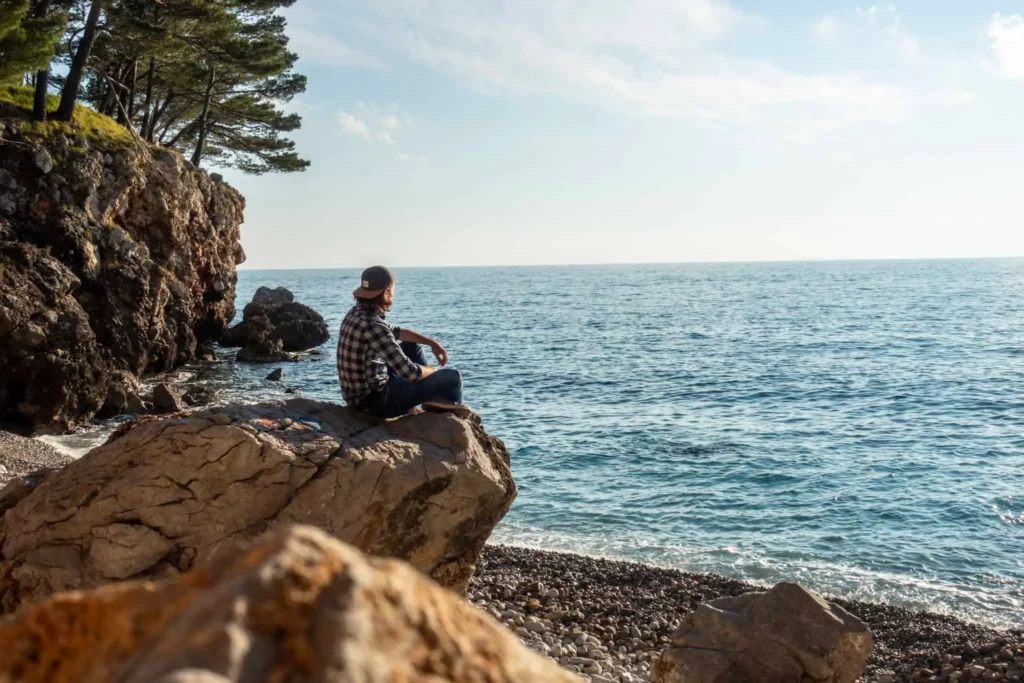| This post may contain affiliate links. Whenever you book or buy something through one of these, Giving Getaway gets a small commission, of which 100% will be donated to charity, without any extra cost to you! |
Are you planning a trip to Seville in 2023? If so, then I’ve got something special for you! In this post, I have compiled a list of the 15 best hidden gems in Seville that you absolutely must not miss during your visit to this beautiful Andalusian city. Whether it’s exploring picturesque neighborhoods, discovering local eateries, or uncovering lesser-known attractions, Seville has got it all.
The best part? These places and attractions have been carefully chosen by locals and travelers with Giving Getaway’s Hidden Gems Collector, helping me to write this and many other posts with unique hidden gems all around the world!
Before I dive into Seville’s hidden gems, just a heads up: as you read this post (and explore the website), you will see some ads, affiliate links, and search widgets. Feel free to click on them if they can help you plan your next trip. It won’t cost you a thing extra, but I will earn a commission of which I’ll be giving away 50% of that commission to charity. Thank you!
But now, let’s explore the 15 best hidden gems in Seville together!
1) Hospital de los Venerables
The Hospital de los Venerables in Seville, originally built as a baroque hospital for elderly priests, now serves as an art gallery and houses the Centro Velazquez, which aims to recreate the historic and artistic world of the painter. Located in Barrio Santa Cruz, this 17th-century building is a peaceful haven within the bustling city. Designed by Leonardo de Figueroa, renowned for his work on many of Seville’s baroque churches, the chapel within the hospital showcases important works by Martínez Montañés, Murillo, Valdes Leal, and Roldan.
One of the notable features inside the hospital is its cloistered patio with a unique stepped sunken fountain adorned with beautiful azulejos (ceramic tiles), surrounded by trees and flowers. The Fundacion Focus Abengoa has established its Centro Velazquez within this historical setting. Here visitors can explore not only works by Velazquez himself but also other notable pieces from that era that highlight his influence and legacy on Seville’s art scene during that time.
In addition to showcasing Velazquez’s artwork, temporary exhibitions are regularly held at the hospital. These may include single loaned paintings such as Picasso’s interpretation of Mother and Child in 2019/2020. Upstairs, there is also a collection of contemporary art featuring artists like Carmen Laffon, Ramon Gaya, and Luis Gordillo, as well as early photographs from the late 19th century.
The chapel dedicated to San Fernando boasts extraordinary ceiling murals painted by Valdes Leal. Within its ornate baroque structure are paintings by Murillo and sculptures created by Pedro Roldán. Notably absent from this space is Murillo’s painting of Inmaculada (Virgin Mary), which he initially crafted for this very chapel; it currently resides in Madrid’s Prado Museum.
2) Triana Neighborhood
Located on the other side of the Guadalquivir in Seville, Triana is a lively working-class neighborhood known for its famous bullfighters and flamenco dancers. This district, accessible by the bridge ‘Puente de Isabel II’, offers an authentic experience with its interlaced small streets that are a pleasure to wander through.
While it may not boast spectacular sights, Triana holds historical significance as the former hub of major water roads in the city. It was known for its typical Azulejos tiles and pottery, characterized by distinctive blue paintings. Over time, as the Guadalquivir River silted down, Triana evolved into a predominantly working-class area.
The Santa Ana Church is one of Triana’s most famous landmarks. Legend has it that children baptized here will receive a good voice for flamenco singing. Additionally, Calle Pureza is home to ‘La Capilla de los Marineros,’ a chapel dedicated to marines featuring the statue of Virgin Esperanza de Triana. During Semana Santa (Holy Week), this statue is carried back and forth across the city to Seville Cathedral.
To complete your visit to Triana, take some time to relax on one of the terraces or restaurants along Calle Betis, a colorful boulevard that offers stunning views of the Guadalquivir River in the evening. With its vibrant atmosphere and hidden gems, Triana is an essential addition to your Seville itinerary!
3) Casa de Pilatos
Combining various architectural styles, such as Gothic, Mudéjar, and Italian Renaissance, the Casa de Pilatos in Seville showcases a beautifully decorated patio with busts of Roman emperors and Greek gods. Built in the 16th century by Don Pedro Enriquez and later by his son Fadrique Enriques de Ribera, this palace is considered one of the most well-preserved buildings from that period.
The name “Casa de Pilatos” is derived from the house of Pontius Pilate, which served as inspiration for Fadrique Enriques de Ribera during his pilgrimage to Jerusalem.
The palace features a stunningly adorned patio with a central well and fountain. Walking through its arches reveals an impressive collection of 24 busts representing Roman emperors and Greek gods. Marble columns and floors can be found throughout the palace along with long corridors, ceiling paintings, large wooden doors, mudéjar tiles (azulejos), chapels, and an exquisite Italian-style garden.
Currently partially inhabited by the 18th Duchess of Medinacelli and her family, the Casa de Pilatos allows you to glimpse into the lives of aristocrats from centuries past. Its blend of architectural styles creates a unique aesthetic that captivates those who appreciate history and artistry.
4) Museum of Flamenco Dance
Situated in the city center of Seville, the Museo del Baile Flamenco serves as an interactive museum dedicated to showcasing the history and art of flamenco dance. Housed in an 18th-century building known as Casa de Palacio, this institution offers visitors a unique opportunity to immerse themselves in the vibrant world of Andalusian culture. Founded by renowned flamenco dancer Cristina Hoyos, who grew up in the very streets where the museum now stands, it pays homage to some of the legends of flamenco dance.
The museum features four themed floors that provide a comprehensive exploration of Flamenco’s rich history and beauty. Through interactive displays and screens, you can learn about different aspects of this traditional art form. From its origins in Andalusia to its evolution into a global phenomenon, every aspect is covered in detail.
In addition to its informative exhibits, the Museo del Baile Flamenco also offers evening performances for those who wish to experience live flamenco firsthand. This provides a truly immersive experience if you are seeking a deeper understanding and appreciation of this captivating dance form.
For anyone interested in learning more about the history and beauty of flamenco dancing, a visit to this museum is highly recommended. It not only educates but also celebrates the legacy and impact of flamenco on both local and international cultures!
5) Basilica of Jesus del Gran Poder
The Basilica of Jesus del Gran Poder is an important religious site in Seville, known for its historicist style and the presence of altarpieces featuring prominent figures such as Jesus del Gran Poder. Designed by Alberto Balbontín de Orta and Antonio Delgado Roig, the basilica was completed in 1965 and received the title of Minor Basilica by Pope Juan Pablo II in 1992.
The basilica serves as the headquarters for the Brotherhood of the Great Power and was built to accommodate and nurture the religious devotion expressed by the people of Seville throughout history toward the Lord Jesus.
The basilica’s façade combines Renaissance and Baroque elements, with a prominent coat of arms of the Brotherhood displayed prominently. Its integration into the square is seamless, adding to its architectural charm. Inside, you will find a striking dome reminiscent of the Pantheon of Agrippa, along with various altarpieces showcasing Jesus del Gran Poder, San Juan, and Virgen del Mayor Dolor y Traspaso.
The Basilica of Jesus del Gran Poder offers a unique opportunity to experience both architectural beauty and religious significance. Pilgrims walking along Via de la Plata or anyone interested in exploring hidden gems in Seville should not miss this remarkable site.
6) Museum of Arts and Popular Customs of Seville
One of the most important collections at the Museum of Art and Popular Customs of Sevilla is devoted to ceramics, clothing, and craft activities in Andalusia. This collection showcases the rich cultural heritage and traditions of the region. The museum offers a glimpse into the customs and ways of life of traditional Andalusian culture through its extensive display of objects and utensils.
The museum is housed in the Mudejar Pavilion, a stunning architectural masterpiece designed by Aníbal González for the 1929 Spanish-American Exhibition. This setting provides an immersive experience as you can delve into the history and traditions of Andalusia.
In addition to its impressive collection of ceramics, clothing, and craft activities, the museum also boasts other noteworthy collections. These include the Aguiar collection of Costumbrist paintings, Soria collection of Oriental ivory and pottery, Gestoso ceramics collection, Díaz Velázquez collection of lace and embroidery (one of Europe’s most significant), as well as Sevilla Council’s original posters for Spring Fair.
Overall, visiting the Museum of Art and Popular Customs in Sevilla is an enriching experience that allows you to gain a deeper understanding and appreciation for Andalusian culture through its diverse collections.
7) Buhaira Gardens
Located near the eastern city walls of Seville, the Buhaira Gardens were originally created in the 12th century and have since undergone restoration to become a public park. The gardens, also known as the Buhaira Palace or Buḥayra, were part of an extensive estate constructed under the orders of the Almohad caliph Abu Yaqub Yusuf.
Designed by Ahmad ibn Baso, the architect responsible for notable structures such as the Great Mosque and Giralda, these gardens were surrounded by a rammed earth wall called the ‘Hait as-Sultan.’
A significant feature of this complex was a water reservoir measuring 43 by 43 meters (141 feet by 141 feet) and 2 meters (6.5 feet) deep. Water was channeled into it through an aqueduct from the east. Fruit trees such as pear trees, apple trees, fig trees, and olive trees adorned these gardens.
After Seville came under Spanish Christian control, the Buhaira Gardens were abandoned until they underwent excavation in the 1970s. Subsequent archaeological studies led to their restoration and integration into a public park inaugurated in 1999. Presently, Avenida de la Buhaira runs through what used to be this historic estate.
8) Flor De Sal Wine Bar
The Flor De Sal Wine Bar offers a truly unique and immersive wine-tasting experience. Operated by Andre, a knowledgeable wine expert, Flor De Sal is renowned for its daily renewed choices of wines served by the glass.
The bar prides itself on offering a diverse selection of wines that cater to different palates and preferences. Additionally, you can indulge in a range of products and cheese platters that perfectly complement the wines on offer.
The positive reviews and recommendations from many visitors further highlight the appeal of Flor De Sal Wine Bar. Many travelers highly recommend this establishment due to its exceptional wine tastings and tours. Guests often commend Andre for his extensive knowledge and passion for wine, as well as the accommodating and friendly service provided.
For those seeking an authentic taste of Seville’s gastronomic delights, Flor De Sal Wine Bar is not to be missed. With its visually stunning ambiance, an extensive variety of wines, delectable food pairings, and memorable wine-tasting experiences, it has firmly established itself as one of Seville’s hidden gems.
9) Mercado de Feria
The Mercado de Feria in Seville offers a comprehensive selection of fresh produce, meat, and flowers as well as a tapas bar known for its delicious fish dishes. Located next to a beautiful 13th-century church, the market provides you with an authentic experience of the city’s street markets. Unlike other touristy markets in Seville, the Mercado de Feria remains true to its local roots.
The market is particularly known for its fresh fruit, vegetables, and meat. Here you can find an array of fruits and vegetables that are sourced locally and are of high quality. The meat section offers a variety of cuts that cater to different tastes and preferences.
In addition to offering culinary delights, the Mercado de Feria also boasts a wide selection of beautiful flowers. The colorful displays create an enchanting atmosphere within the market.
One highlight of the Mercado de Feria is its tapas bar called La Cantina. This bar serves some of the freshest and most delicious fish dishes in Seville. All this makes the Mercado de Feria one of the best hidden gems to visit while in Seville!
10) Hospital de la Caridad
The Hospital de la Santa Caridad in Seville is a 15th-century baroque charity hospital known for its superb artworks by Golden Age painters such as Murillo, Zurbaran, and Valdes Leal. This historic hospital was originally founded to provide Christian burials for those who died by execution or drowning in the river. Under the leadership of Manuel Mañara, it expanded its role to become a hospice that cared for the destitute, including beggars and the homeless.
One of the most famous parts of the hospital is its 17th-century chapel of San Jorge (St George), which features gilded baroque decorations and works of art by Murillo, Valdes Leal, and Roldan. The facade of the chapel was designed by Leonardo de Figueroa and showcases carved figures of San Fernando and San Luis.
Notable works within the chapel include Valdes Leal’s studies on death: Finis Gloriae Mundi (End of the World’s Glory) and In Ictu Oculi (In the blink of an eye). These paintings reflect the impact of the plague that devastated Seville in 1649 and depict themes of wealth, poverty, greed, and charity.
The chapel also houses commissioned paintings by Murillo that continue the theme of charitable acts. Although some were stolen during the War of Independence, replicas now hang in their place. Another significant artwork is Zurbaran’s Christ Crucified.
11) Tablao Flamenco El Arenal
Tablao Flamenco El Arenal is an emblematic flamenco scene in Seville, situated between the Cathedral and the Guadalquivir River. With a history spanning over 40 years, this venue offers an opportunity to experience the purest and most authentic Flamenco Art.
Located in the neighborhood of El Arenal, Tablao El Arenal occupies a typical Andalusian building from the seventeenth century that has been fully renovated to provide customers with a complete service. The venue can accommodate up to 110 clients and hosts two daily shows, each lasting approximately one and a half hours.
Many of the artists performing in Tablao El Arenal have received national and international dance awards, highlighting their exceptional talent. The New York Times even recognized it as the best flamenco show in Seville.
The interior of Tablao El Arenal is adorned in traditional Andalusian style. Decorative elements such as old engravings and flamenco posters line the walls, depicting iconic Sevillian themes like the Feria de Abril. Spectators are seated around the stage, ensuring excellent views from every angle.
If you seek an unforgettable flamenco experience in Seville, Tablao Flamenco El Arenal should not be missed. Its rich history, talented performers, and captivating atmosphere make it a truly remarkable destination for lovers of this unique art form.
12) Monastery of Santa Maria de las Cuevas
The Monastery of Santa Maria de las Cuevas, also known as La Cartuja Monastery, was originally a 15th-century monastery from the order of the Carthusian monks. After being abandoned by the monks in 1836, it transformed and became a ceramics factory. The distinctive chimneys that adorn the building serve as a reminder of its industrial past. Today, the exquisite ceramics produced at this site are renowned under the name “La Cartuja de Sevilla.”
Legend has it that Christopher Columbus spent time within these monastery walls, assisting the monks with their duties and preparing for his historic voyages around the world.
In more recent history, during Expo ’92, significant restoration work was undertaken on the monastery to serve as one of its main buildings. Currently under the custodianship of CAAC (Andalusian Centre for Contemporary Art), this architectural gem showcases modern art through various exhibitions.
A visit to this monastic site offers several highlights worth exploring. The Casa Prioral features an exhibition showcasing the monastery’s rich history throughout the centuries. Additionally, you should not miss out on experiencing the chapel and chapter house with its crypt.
13) Casa de la Guitarra
Another hidden gem in Seville that shouldn’t be missed is Casa de la Guitarra. This venue offers captivating and impressive performances of true flamenco guitar, singing, and dancing. The highly skilled performers provide an authentic Spanish folklore experience, showcasing their skillful talents in a small and intimate setting.
Casa de la Guitarra creates an atmospheric ambiance through its cozy and intimate atmosphere. The venue’s small size allows for a close-up view of the performances, giving attendees a front-row experience. Although there are no additional amenities available such as a bar, the lack of frills adds to the authenticity of the overall experience.
The performances at Casa de la Guitarra are conducted entirely in Spanish but come with English summaries to ensure understanding for non-Spanish-speaking audiences. The mix of guitar work, singing, and emotionally charged dancing create captivating and engaging shows that leave a lasting impression.
Furthermore, Casa de la Guitarra stands out as an affordable option compared to other flamenco shows in Seville. Its limited seating capacity ensures a more intimate experience for all attendees. If you’re looking for an authentic flamenco experience in Seville, Casa de la Guitarra is definitely worth a visit!
14) La Linterna Ciega
La Linterna Ciega offers a menu featuring tasty Spanish tapas, speck, and pork sandwiches, as well as delicious craft beer, draft beer, and wine options. This restaurant is known for its well-organized menu and flavorful Spanish dishes.
The recipe for success at La Linterna Ciega lies in its excellent food offerings such as the good che, panna cotta, and parfait. The establishment has gained popularity among locals and travelers due to its great service provided by friendly staff who are always ready to assist customers, and with fair prices given the quality of the food and drinks.
The atmosphere at La Linterna Ciega is pleasant with a homey decor that adds to the overall dining experience. It is worth noting that this bar stands out from others in Sevilla because it specializes in craft beers. Additionally, their tapas menu features an Italian theme which sets it apart from other establishments.
Overall, La Linterna Ciega offers a unique dining experience with flavorful Spanish dishes and an impressive selection of craft beers. Its excellent service and cozy ambiance make it a hidden gem that should not be missed when visiting Seville!
15) Monasterio de Santa Paula
The Monastery of Santa Paula in Seville, established in 1473, is a historic religious complex that includes a church and an adjoining sixteenth-century cloister. The monastery was founded by Doña Ana de Santillana for nuns of the cloistered Order of Saint Jerome.
The complex consists of a church built between 1483 and 1489, and a cloister that was expanded during the seventeenth century. Accessible through a modest brick doorway from the street level, the monastery’s atrium features an impressive entryway to the church known as the Niculoso Pisano Portal. This architectural masterpiece combines elements of Gothic, Mudéjar, and Renaissance styles.
The World Monuments Fund and WMF Spain collaborated with the Instituto Andaluz de Patrimonio Histórico to conserve the deteriorated Niculoso Pisano Portal. The project involved preliminary studies, documentation of existing conditions, and implementation of conservation techniques based on previous studies.
Located in Seville’s historic neighborhood of San Julián, Santa Paula is not only designated as a historic monument but also continues to have an active presence within the community. Here you can explore various spaces within the complex that have been transformed into a museum housing a permanent art collection.
Conclusion
Seville is an Andalusian city that is full of hidden gems waiting to be discovered. Whether you’re a history buff, an architecture enthusiast, or simply someone who loves to explore new places, Seville has something for everyone. From its stunning cathedrals to its charming neighborhoods and mouthwatering food scene, there’s no shortage of things to see and do here.
In case you are already planning a trip to Seville (or any other city or country) soon, please make sure to book your hotel, flight, rental car, and other travel essentials with Giving Getaway.
Every completed booking earns Giving Getaway a commission, 50% of which will be used to organize charity events like the 2021 Christmas gift drive for kids and teenagers in a children’s home in Montenegro.
So not only will you be experiencing the trip of a lifetime, but you’ll also be contributing to a good cause. Start planning your trip now and make a difference with Giving Getaway!




